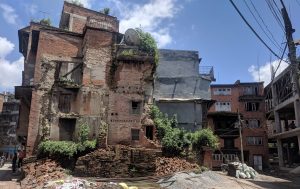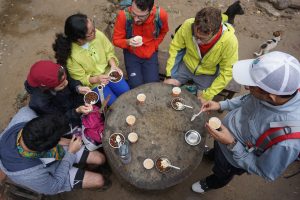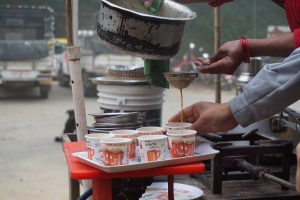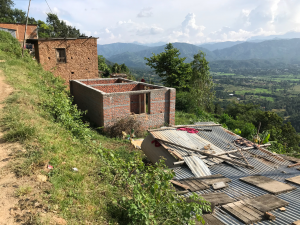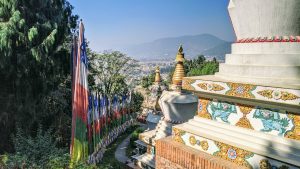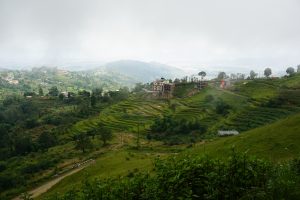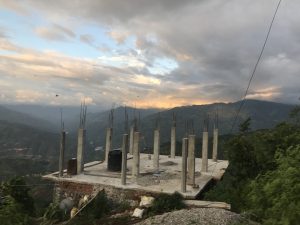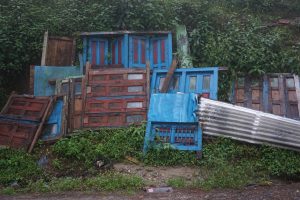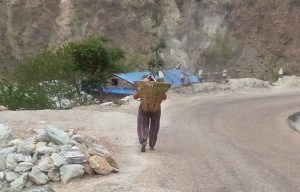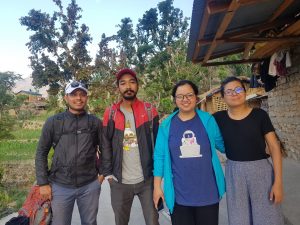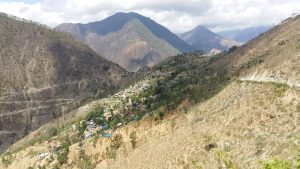INFORMATICS FOR EQUITABLE RECOVERY
Mapping and integrating social vulnerability into post-disaster impact assessments
Informatics for Equitable Recovery is a transdisciplinary research collaboration that brings together data scientists, engineers, social scientists and civic organizations to improve post-disaster information systems and decision support tools. Example use cases for these information systems include post-disaster needs assessments (PDNAs) and recovery aid policy design.
After the 2015 Gorkha earthquake in Nepal, the need for holistic post-disaster information systems became even clearer. We developed novel methods combining spatial statistics, field surveys, social science, and machine learning models to develop rapid damage and need estimates that reflect the different ways that disaster impacts are felt by communities and enable these estimates to be used meaningfully in the recovery process.



Read our project’s
final report
Click below to read our final report, “Supporting equitable disaster recovery through mapping and integration of social vulnerability into post-disaster impact assessments”, completed in March 2020.
VIEW REPORTREAD PDFUpdates and Publications
Click to view publications, code, presentations, blogs and reports from our collaboration.
G-DIF EQ Spectra paper
Click the link above to read more on our Geospatial Data Integration Framework to rapidly estimate damage published in Earthquake Spectra
Blog on April 25 Memorial
Click the link above to see our blog post, “Five years later: equitable recovery research in Nepal”, written for the April 25 Memorial.
Dataset Repository on Notion
Click the link above to find and access publicly available datasets that were used for our project, especially for G-DIF.
G-DIF Code Repository
The Geospatial Data Integration Framework (G-DIF) code is publicly available on GitHub, using the R programming language.
17WCEE Paper Submission
Click above to read the manuscript for “Beyond building damage: modeling post-disaster need”, submitted to 17WCEE in 2020.
Blog: Stories from the Field
A guest blog written by one of our field researchers, Jasna Budhathoki, describing survey experiences in Nepal.
AGU 2019 Presentation
Towards Human-Centric Rapid Post-Disaster Impact Assessments Through Transdisciplinary Informatics (Invited)
Blog: Workshop 3 in Nepal wrap-up
Click to view David Lallemant’s blog wrapping up our third workshop in Kathmandu, Nepal, with our project collaborators.
VizRisk Challenge: After the Quake
Sabine Loos, Arogya Koirala (KLL) and Karen Barns (Arup) won Best Visual Design in the UR VizRisk Challenge. Read their blog.
Geo4Dev 2018 Presentation
Sabine Loos presented on our project at Geo4Dev 2018 in Berkeley, California. Click the link above to see video of the presentation.
AGU 2018 eLightning Poster
Click the link above to view Sabine Loos’s poster from AGU 2018 in Washington, D.C., describing our work on geospatial data integration.
Blog: Informing Equitable Disaster Recovery
Click the link above to read Sabine Loos’s blog on going beyond economic losses in understanding disaster recovery.
2018: Innovation Fund Awarded!
Click the link above to view the funding announcement from the World Bank, listing our project among 12 other winners.
Collaborators
Our collaborators come from diverse academic disciplines, are located in different places, and bring their unique perspectives to our work.




Project Gallery
Acknowledgements
This project, Supporting Equitable Disaster Recovery Through Mapping (Nepal), submitted in response to the 2017 call for proposals by the World Bank’s Development Data Group (DECDG) and the Global Partnership for Sustainable Development Data (GPSDD), is supported by the World Bank’s Trust Fund for Statistical Capacity Building (TFSCB) with financing from the United Kingdom’s Department for International Development (DFID), the Government of Korea, and the Department of Foreign Affairs and Trade of Ireland.
The project is also supported by the Earth Observatory of Singapore and National Research Foundation.






















